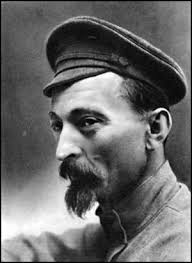403 Cossack Adolescents: Soviet Genocide? April 23, 2015
Author: Beach Combing | in : Contemporary , trackbackBeach lives in a part of Europe (Italy) where the memory of the Soviet Union is revered not only by daft revolutionaries creeping out at night to graffiti their way to world revolution; a good part of the general population also makes this mistake. Of course, they will not defend Stalin and they shed some tears about Russian atrocities in the Ukraine, say, but basically the USSR was alright Jack and if it hadn’t been for those scheming Americans… Beach thought that he would print out this short extract and put it in his wallet for the next time he gets into a the-Soviets-were-alright conversation. It is the most vivid and most horrible example he knows of revolutionary excesses from early on when Stalin was still just a vague pain in Lenin’s posterior. The document in question is a message from Felix Dzerzhinsky (aka Iron Felix) the man who ran the Cheka (Soviet secret police) from 1917 to 1926, when he died after a two hour temper tantrum directed at Trotsky (really). It dates to 20 Nov 1920:
403 Cossack men and women, aged between fourteen and seventeen, have arrived without documentation in Orel from Grozny to be imprisoned in the concentration camp for rebellion. They cannot be accommodated as Orel is overcrowded.
Lenin wrote simply in the margin: ‘for the archives’. The implication of the note and its consignment to history suggest that the 403 would be liquidated: which means that Iron Felix would take them down to the Cheka shooting range in small groups. This was a small part of the systematic genocidal acts against Cossack populations in the Soviet Union.
Murder is, in any case, how Dmitri Volkogonov (Lenin’s biographer) understands the note and he is almost certainly right. The black list of Soviet crimes is long already but there is something particularly ghastly about this one. The number, the age (many perhaps most of these were children), the collective nature of the punishment (these were a group not individuals), the reason for the killing (no room left in a prison camp), the fact that they were killed because of their bloodline (they were ethnically Cossack), and finally Lenin’s acceptance that this is not a case of protest but one for the archives. Perhaps the only difference between this Soviet crime and a Nazi einsatzgruppen report is that the Nazis would have felt no need for that final ‘cannot be accommodated’ before killing: murder was their trade. Murder was also the Cheka’s trade, of course, but in 1920 they still needed a motive.
Other vivid crimes from the Soviet back files: drbeachcombing AT yahoo DOT com
1 May 2015: Three Eyed Goddess (the best kind) writes,
How about the engineered famines in Ukraine between the wars? Wikipedia offers a death toll of 2.5 – 7.5 million, but Timothy Snyder’s book _Bloodlands_ puts the toll at 10 million. Gareth Jones the Welsh investigative journalist told the world what was happening in 1932 but the New York Times reporter Walter Duranty refuted reports of famine as anti-Soviet lies and was then granted an interview with Stalin the first by an American. Duranty called Stalin ‘the world’s greatest living statesman’.
The effort of Ukrainian activists to revoke Duranty’s PULITZER PRIZE for journalism has been met with bemusement by the prize committee.
Interesting the New York Times would be covering for a monster like Stalin.
Par for the course but kinda makes ya think, don’t it? Why were Nazis and Soviets collaborating in the murder of tens of millions in eastern Europe? Why did those peasants have to be eradicated? Why has this genocide been submerged? Who was coordinating actions of the Nazi and Soviet death squads and fostering their cooperation?
Like your tone, Three Eyed…



